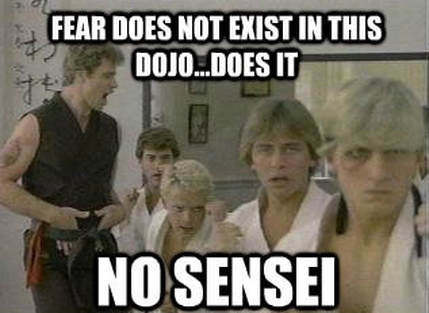|
In the skilled trades and service industries, we often are hiring young people with little work and people experience and expecting them to excel with minimal training. Somehow, we expect them to magically acquire skills that we barely master, including communicating with customers. Eric “The Tech Whisperer” Sprague joined us for The DYOJO Podcast and discussed the backwards thinking he had as a manager expecting twenty somethings to be able to explain complex service offering such as property restoration. He had to learn and develop a process for training his team members which he calls Morning Tech Meeting. Integrity is key when talking to customers Remember that communication is more than just talking. If your goal is to develop a thriving culture, then you will want to remind your team members that their integrity is essential. Most organizations have some variance of “do it right” as a core value, but few do much in the way of training to help team members understand how that applies to their work. Unfortunately, there are too many examples of people who will speak when without thinking about what they are saying or about things that they don’t fully understand. Perhaps that hits you because you are guilty of doing this. You are not doing yourself or your client a good service if you tell them something just to ease the tension or sound important. Train your team, and show them by example, that it is ok to NOT know the answer to a question. Training your team to talk to customers - Rule number one Whenever we would onboard new technicians, or in peak season when we would bring in temporary labor, I would give some variation of a speech about two great communication anathemas that weren’t to be practiced in our team culture:
Training your team to talk to customers - Rule number two Customer service, or better said, the customer experience, is essential to long term success. You cannot expect that customer service is common sense or that your existing team will pass down everything that you hold dear.
The habit of training your team to talk to customers If you are a manager and/or owner, when you train your team members to develop their mindset and habits, you communicate opportunities for growth which will also push you to continue to grow. This quote attributed to Richard Branson, is a strong encouragement to any organization that wants to thrive with their people, "Train people well enough so they can leave, treat them well enough so they don't want to."
0 Comments
How organizations approach training and certification has a direct effect on development and retention.In the property restoration industry we all have heard multiple employers complain that they sent their employees off to a water damage certification class only to lose them in a short period of time to their competitors. These same persons in positions of leadership believe that the issue is 100% on the employee side. If we take a step back to dig beneath the surface are we able to determine whether the symptoms give us more insight on the potential cause(s)? Organizational approach to trainingHow does your organization approach training within your team? Is training a priority in the sense that those responsible come prepared to meetings with relevant information? Often designated training time approaches with no preparation and is utilized by leadership to air out opinions on how the team is coming up short on execution. When a team has experienced water, fire and hazardous restoration employees, there are plenty of resources to facilitate sharing of knowledge from within. Questions leaders should ask about training
Organizational approach to certificationHow does your organization approach certification with your team? Is certification something that is earned and celebrated? Most organizations are one of two extremes - A) certify everyone from day one or B) certify as few persons as possible. Certification extreme A often puts the cart before the horse and produces employees who have the book smarts without any field experience which creates some tension with their trainers. Being able to quote the IICRC S500 standard reference guide for professional water damage restoration is only one of many steps to being able to successfully perform mitigation. Certification extreme B creates an environment without opportunity to expand knowledge or promotion within the team. While those in leadership would say they value industry certification, they either value it too much or do not practice what they preach. The end result is that only a few designated representatives become the information silos in the workplace. Organizational application of certificationWhether you certify everyone or only a select few, what do you do with certification on your team? If your competitors are lining up to pay your employees who have become more valuable by completing benchmarks such as IICRC S500 or EPA RRP, why are you not competing for your own internally developed resources? Common organizational responses to certification
Optimizing training and certificationLead by example. As a person in a position of leadership, are you still actively learning new things about your industry? While the leader should not be the only one acquiring certification, they should lead by example that on going education and personal development are important. When was the last time you learned and/or shared something? Invest in your greatest assets. Do you invest in regular training to develop your teams abilities and opportunities? Employee retention in the current economy is more difficult and costly than customer acquisition. Certification alone is not the cure all to employee development but it should be viewed as a valuable tool for the team as well as the team members. Celebrate achievement. Who doesn’t like to celebrate? What does your team celebrate? Do you celebrate certification both leading up to and following completion of the course? Do you make an effort to notice and share the day-to-day wins of your team? Don’t allow negativity to steer the organizationPerhaps many organizations are speaking their future into reality when they view their team members in a negative light. If you are fearful or suspicious of your people leaving the organization rather than blame them for being unreliable, make an effort to create an organization that they wouldn’t want to leave. Easier said than done, but clearly focusing on blaming others and complaining to your friends with similar negative views isn’t fixing the problem.
Today we need to talk about how we treat out employees when training or discipline is necessary. Our helpful Kids As Managers team helps us run through a few scenarios. When discipline is conducted in relationship to values (more), the process can be a positive engagement tool that develops future leaders. IZ Ventures can assist with team development and process improvement. IZ.Media can help you with boosting brand awareness through content creation and video production.
 There are no days off in the DYOJO of business There are no days off in the DYOJO of business You cannot have unity without trust. You cannot have trust without truth. Define, disciple and discipline around your core values. Not that long ago I was speaking with a person in a position of leadership (PIAPOL) and we were discussing why a local team was struggling with unity. I asked this tenured PIAPOL if they understood the foundation of unity within a team. My friend looked at me quizzically and stated that they did not. I shared that there is no unity without trust. My friend agreed, “That’s true you need trust if people are going to work together.” We expanded our conversation by asking, where does trust come from? Similar response to my prior question so we discussed that the basis of trust is being able to rely on you to do what you say. For example, if you tell me that you are going to sweep the floor, I should be able to trust that you are going to be able to sweep the floor. If you sweep the floor, as you said you would, I will continue to trust you and will build trust with you. If you do not sweep the floor, as you said you would, I will question whether I can trust you. There may be a good reason why you didn’t sweep the floor, but if you did not communicate with me or follow through with what you said you would do at the next time you are able to do so, I will question whether I can trust you and we will struggle to build trust. Sweeping the floor is a simple task, but it isn’t as much about the action itself but it’s connection to what you said you would do. It’s about truth. Many organizations want their people to get along and like each other, this is a Utopian work place, but it isn’t always achievable as there are many factors that lead to those conditions – some of which leaders, organizations and employees have control over and many which they do not. Respect on the other hand is something that is achievable, is a basic expectation that an organization can train and discipline for and can be a catalyst for successful collaboration. I don’t have to like you to respect you but I do have to respect you in order to work with you in a sustainable fashion. Odds are if you work in a manner that is respectful, there is a strong likelihood that we can grow to like each other around that foundation. Respect comes from truth fleshing out in trust, and as previously outlined, trust comes from truth in action (more) – i.e. doing what you said you would do. If I do what I said I would do and you do what you said you would do, we have a functional operation and the foundation for respect. If everyone is invested in being people who do what they say they will do then we can build trust and be unified around those values. Simple things like telling the truth, doing what you say you are going to do and being organization that upholds as well as disciplines around those basic values are the foundations of developing unity. Jesus said it this way, "If you are faithful in little things, you will be faithful in large ones. But if you are dishonest in little things, you won't be honest with greater responsibilities (Luke 16.10 NLT)." Seek and hire people who do what they say they are going to do, people who are trust worthy and who tell the truth. When you have a team full of individuals who are committed to doing what they say they are going to do you have the basic ingredients for an organization that respects each other, is trustworthy and can be unified in their collaborative efforts. Conversely, if people do not do what they say they are going to do there will be no trust between team members. If there is no trust there will be no unity. If you are struggling with unity this is a symptom of a broader problem. Long winded lecture, now back to the conversation: Have you looked into whether your team members trust each other? No. Do your team members have good reasons not to trust each other? No. I don’t think so. Do your team members do what they say they are going to do? Yes. If that is true, what could be the reason? Like you said, they need to trust each other. Did you hear what I said in my long winded lecture on the origins of unity being rooted in trust and trust being based on truth? Yes. Do you understand where trust comes from? Yes. Where does trust come from? I don’t know. I just want our team to be more unified. Ok. Good luck. Perhaps all of this is nonsense. Maybe the concepts of being truthful and building trust by simply doing what you say you are going to do are too lofty. A few years back we coined the phrase DYOJO among some friends, which means Do Your Own Job. We added the additional O so that it sounded like dojo or a training ground for martial arts. In this way it’s the Dojo of Doing Your Own Job, we are learning and sparring and at times fighting to be the best that we can be. Our training ground is the DYOJO. The friend, who serves as a person in a position of leadership, I was speaking with went on to share in his next meeting that everyone needed to trust each other. “We need to have better unity, be less negative and trust each other.” While all three of these statements are true in isolation, unfortunately my friend the PIAPOL did not see how they had to be true collectively in order to have any power. Whether we don’t’ want to admit that we have issues or we don’t want to roll our sleeves up to do the dirty work of fixing the actual underlying issues rather than chasing our tails on symptoms, often times the answers to our questions are simpler than we want to admit. Key steps to build team unity:
|
AuthorThoughts on personal and professional development. Jon Isaacson, The Intentional Restorer, is a contractor, author, and host of The DYOJO Podcast. The goal of The DYOJO is to help growth-minded restoration professionals shorten their DANG learning curve for personal and professional development. You can watch The DYOJO Podcast on YouTube on Thursdays or listen on your favorite podcast platform.
Archives
March 2023
Categories
All
<script type="text/javascript" src="//downloads.mailchimp.com/js/signup-forms/popup/unique-methods/embed.js" data-dojo-config="usePlainJson: true, isDebug: false"></script><script type="text/javascript">window.dojoRequire(["mojo/signup-forms/Loader"], function(L) { L.start({"baseUrl":"mc.us5.list-manage.com","uuid":"b9016446bd3c6a9f0bd835d4e","lid":"83282ffb9e","uniqueMethods":true}) })</script>
|
Jon Isaacson |
Connect. Collaborate. Conquer.
© COPYRIGHT 2015. ALL RIGHTS RESERVED.
|



 RSS Feed
RSS Feed